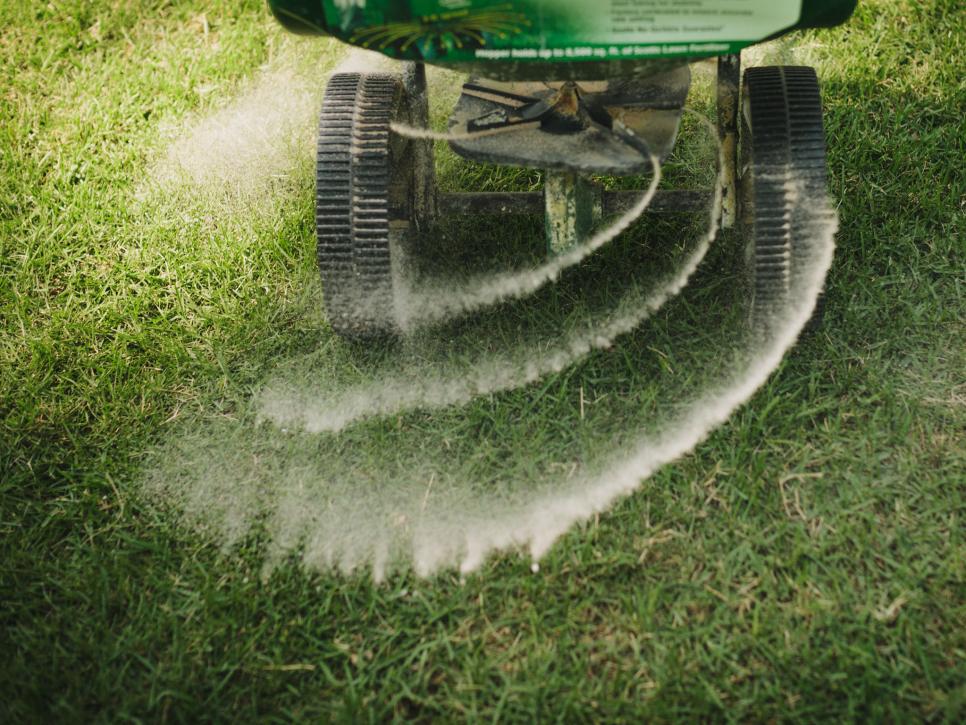
If you live in Pittsburgh, the best time for fertilizing your lawn is in the spring when the lilacs begin to flower and your yard starts to green. When you fertilize in the spring, your lawn will get the nutrients needed after surviving Pittsburgh’s long winters.
Understanding Fertilizer
Before anything, make sure you know and understand the soil. You can do this by performing a simple soil pH test, which can tell you what levels of nutrients your soil is currently at and ultimately where it should be for the best results. When you purchase fertilizer, there will be three numbers on the label of the container. These are the numbers of the primary nutrients nitrogen, potassium, and phosphate which are needed to keep your lawn healthy. This means if the bag reads 20-5-10, then it will have 20% nitrogen, 5% phosphate and 10% potassium. The remainder of the bag will contain filler material which makes it easier to apply.
Slow-release Fertilizer
When using a slow release fertilizer, there will be a long wait between applications. It takes longer for the nutrients to break down. Depending on how much you water, you can reapply every 6-8 weeks instead of every four weeks. The best kind of slow-release fertilizer is one that contains nitrogen but not an overabundance. If overused, it will make the grass grow faster which means you’ll be mowing more frequently. Apply between 2-3 pounds of nitrogen that extends over the entire growing season.
You also might want to consider using a granular fertilizer if you really want to treat your lawn right. Granular fertilizer can be applied more accurately and consistently than different types of fertilizer, there forth better results.
Regular Watering
When you water your lawn often, you will need to increase the use of fertilizer. When a lawn is regularly watered, then the growth rate increases so the grass will need more fertilizer. When it grows, it uses more nutrients and if you have a sprinkler system, fertilizing every six weeks will ensure a healthy lawn.
Before you apply the fertilizer granules, make sure to read the label on how much water will be needed. Some granules will require you to use water before it can break down. But, some fertilizers want the lawn wet with about a quarter inch of water before application.
When to Apply
Fertilizer used on lawns in Pittsburgh shouldn’t be applied before the soil temperature has reached 55 degrees. So, the first feeding should be done around mid-April. A second application can be spread early to mid-May. For the third application, using manure or any other organic fertilizer is better for your yard. After that, fertilizer needs to be applied every six to eight weeks into October.
Keep in mind, fall applications are just as important since your lawn is still growing. Ultimately this helps your turf get through the winter and be a lush green in the following spring.
How to Spread
As a homeowner, a broadcast spreader is a more sensible choice than a drop spreader. Broadcast spreaders are easier to use and spread fertilizer at a more extensive distance. The possibility of ending up with unfertilized strips is more unlikely because of rows not overlapping.
Do not go by the application rate. If you start out with half the recommended rate in one direction, then you can spread it over the remaining direction with the other half the rate. This will give you better coverage and you don’t over-apply.
Start with the edges of the yard first, then fill in the middle. You won’t need to estimate how much space you’ll need between the rows because the granules won’t spread very far. Also, if fertilizer ends up on your patio or driveway, sweep it up. Don’t let the rain wash it away because it can get into the water table and cause pollution.
It isn’t challenging to fertilize your lawn if you follow the directions and use common sense. For additional help with fertilizing your lawn, visit our Pittsburgh lawn care page.